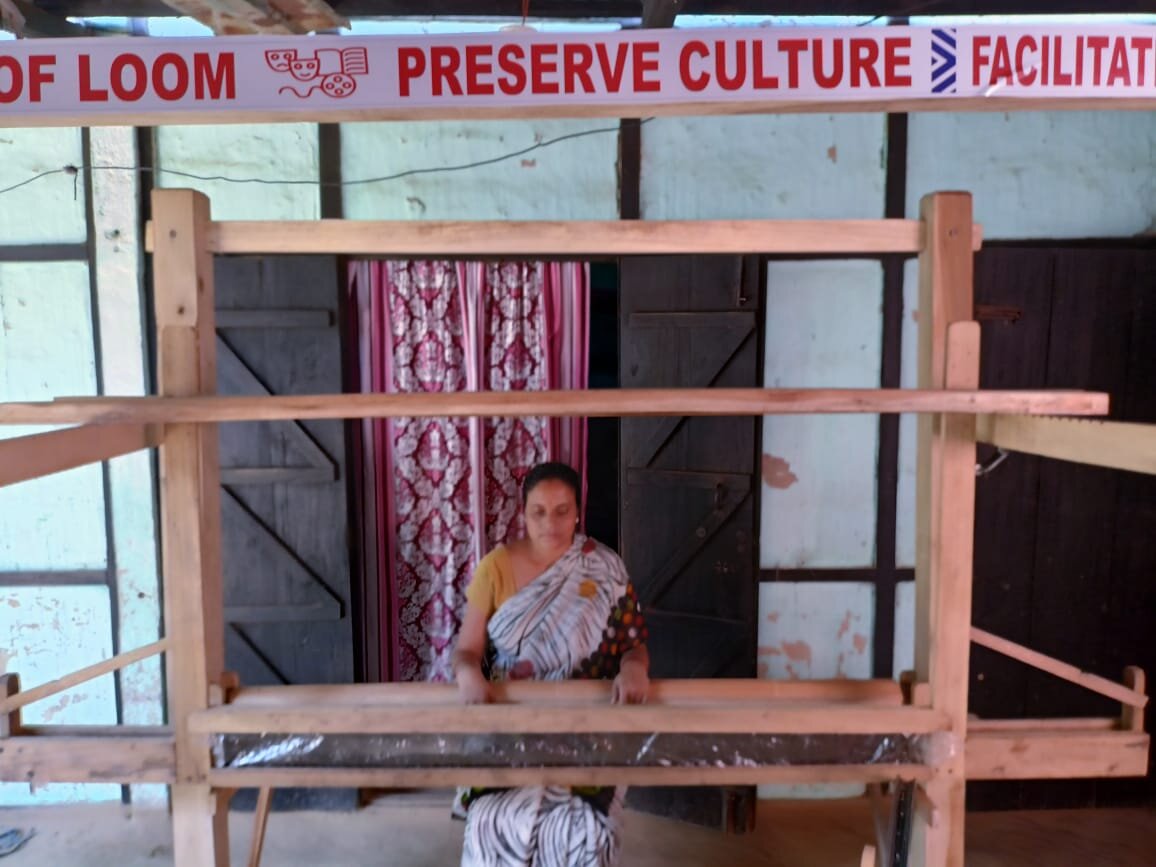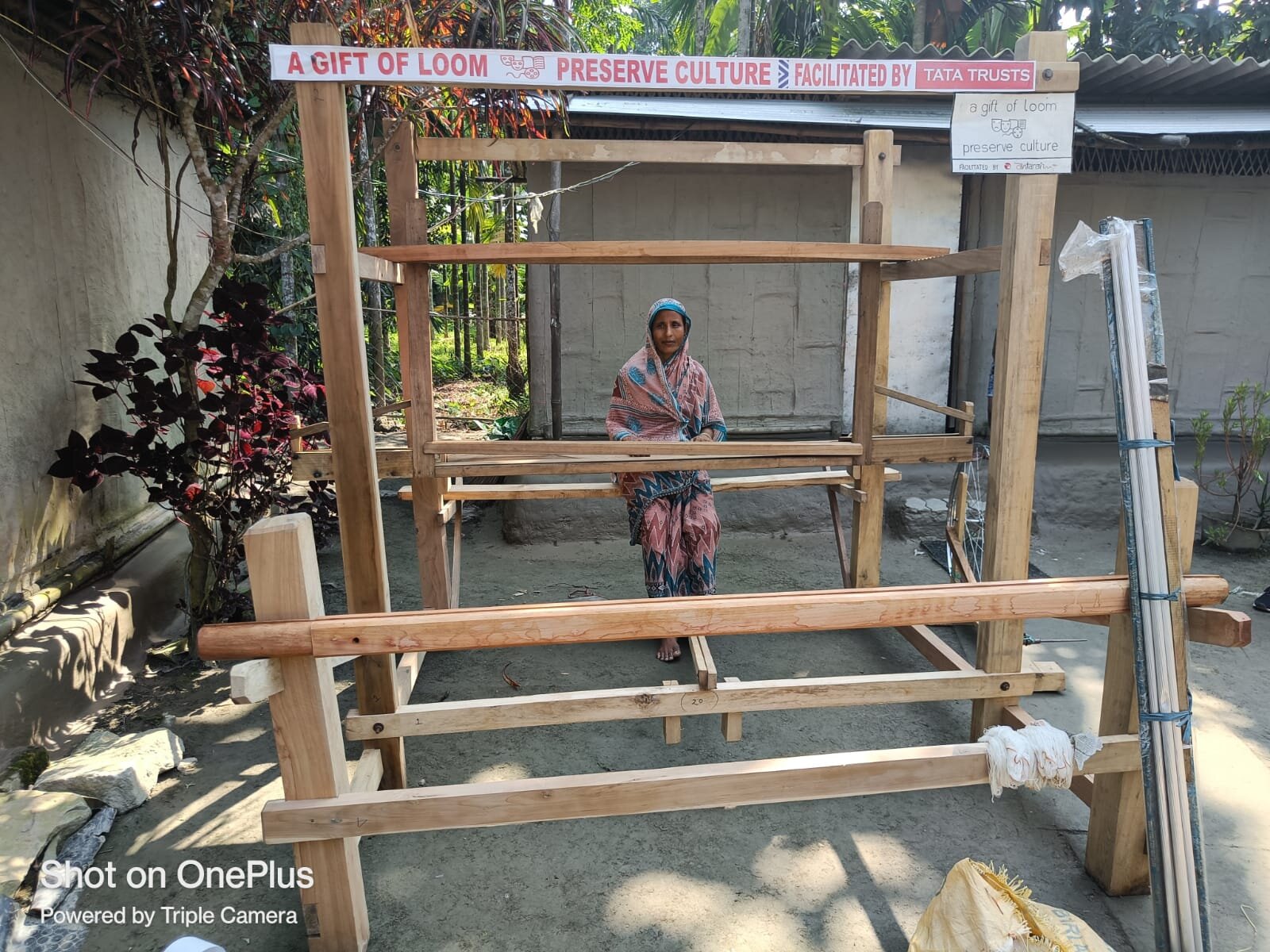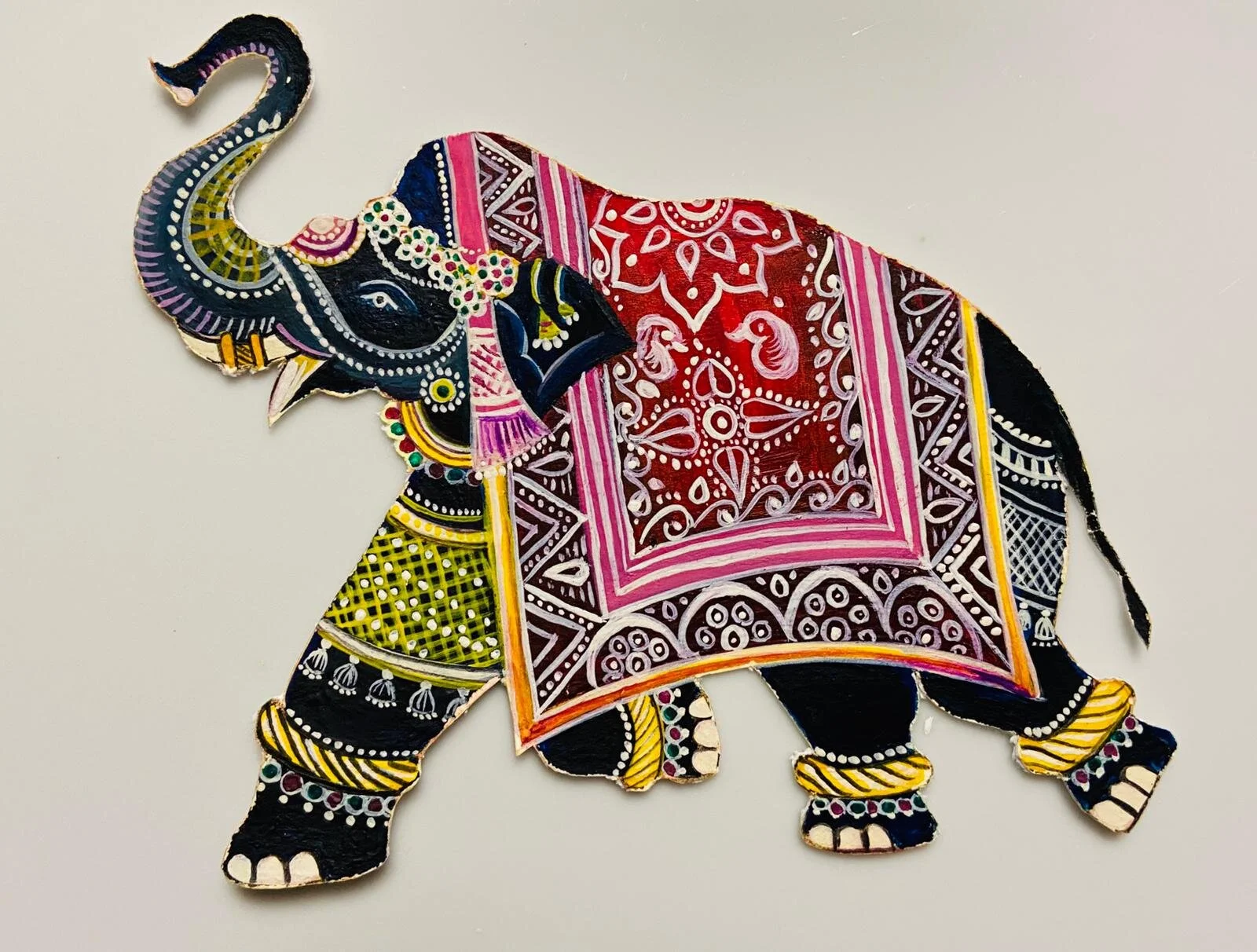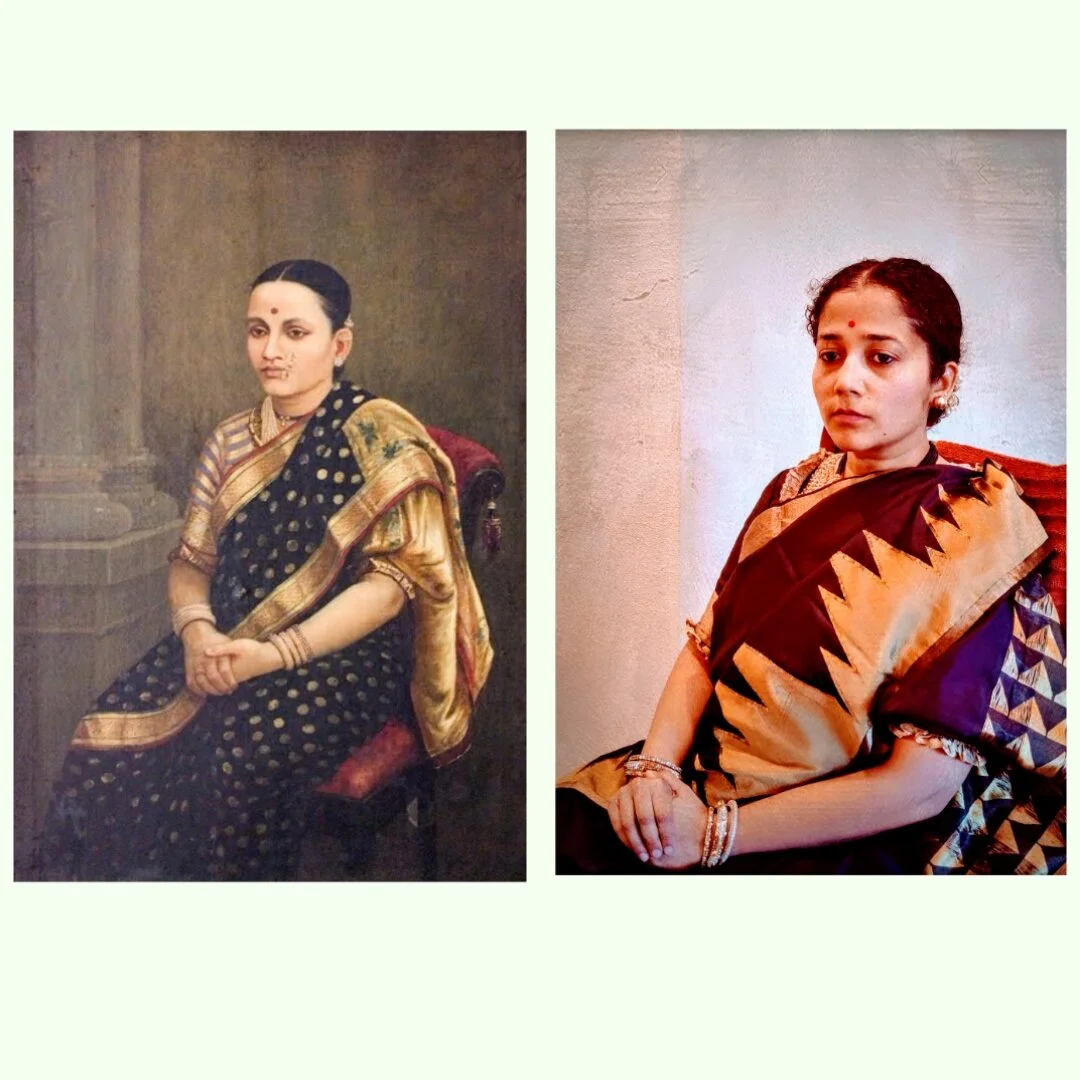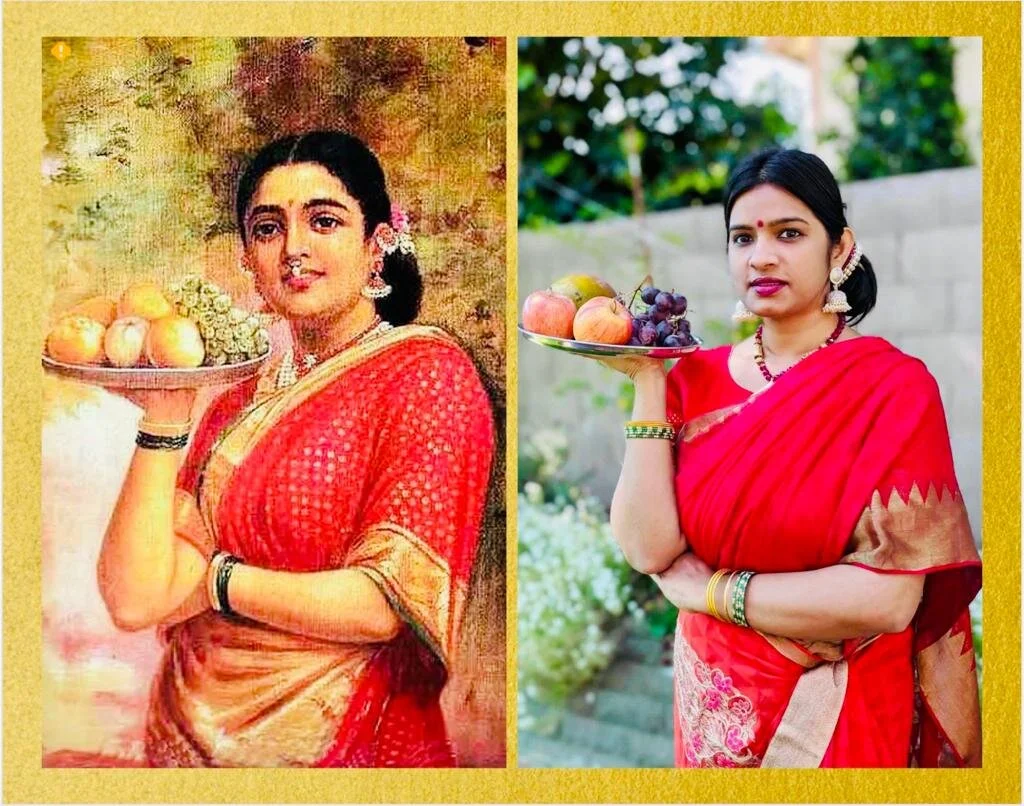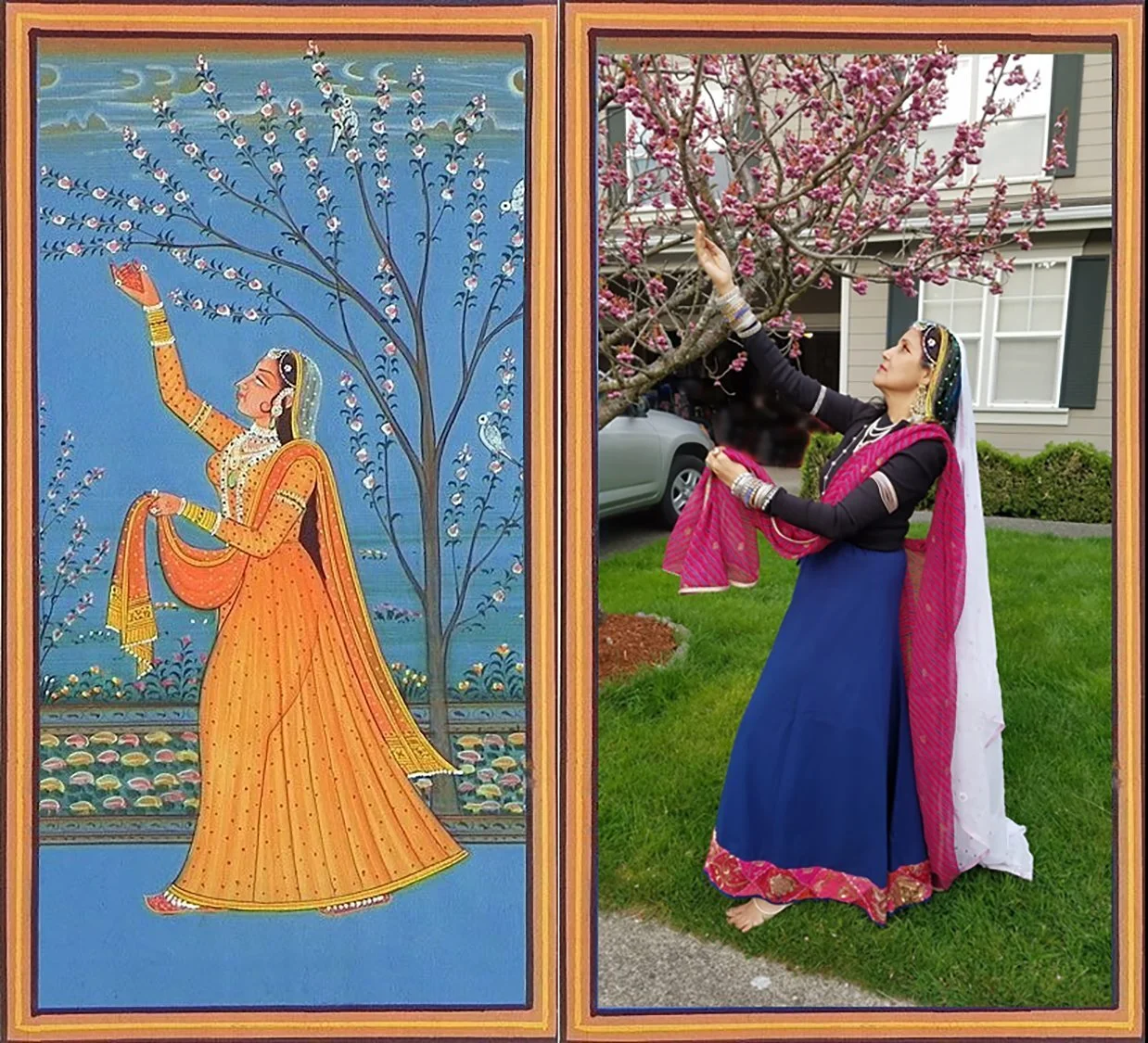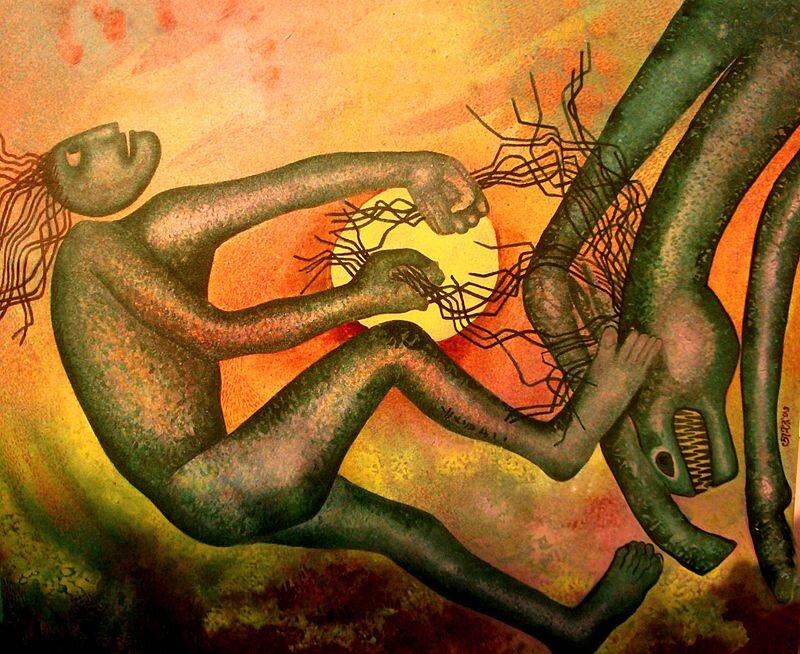
Our Current Initiative - Gift of Loom
For weavers, a loom is their lifeline. And for women in Assam, a loom is also a way to preserve their cultural heritage. But for many artisans, the looms they use are old and with repeated wear and tear, the quality of fabric lacks the quality to compete for a modern consumer.
To help these artisans make their craft practice viable in a contemporary market, we donated new looms that are better quality and will help many of these artisans continue to practice their traditional craft. Procurement and distribution of the looms were facilitated by Tata Trusts, who helped with on the ground logistics.
You too can join our cause and give a gift of loom to an artisan.
Preserve Culture is a 501(c)(3) non-profit organization and this means that your donations are tax-deductible. You will get a receipt to claim your tax deduction. 100% of your contributions are used to directly benefit artists engaged in creating cultural artifacts
Past Initiatives

Stories about all things Culture
Baiga art is known for its intricate designs and vivid colors, which are inspired by the natural world. The Baiga people believe that everything in nature is interconnected, and their art reflects this philosophy. They use natural materials like clay, leaves, and plant dyes to create their artwork, and their designs are often based on the patterns found in the natural world.
Are there fabrics worthy of a king’s treasure? And are there some qualities that make a fabric to be considered luxurious or of great value? The obvious answer may be “No”. Fabrics are such common items that these are used all over the world for clothes, sheets, blankets, and many other items. So, what can be special about them? But there indeed are fabrics from the Kamrup region, modern-day Assam state, of India. Fabrics such as non-violent Eri. Silk and soft cotton are weaved using a tradition. dating back thousands of years ago.
The Holi celebration happens in Nandbaba temple courtyard. There are thousands of people and at least a thousand photographers from all over the world. The ceremony and the amount of color that is used is mind-blowing and breathtakingly beautiful. It is a transcendental and very unique experience. There is music with drums, people dancing and transgender women doing the mystic dance.
An art that has transformed the lives of many women in India, Madhubani is an art form that has survived for thousands of years. Originally used widely to decorate walls in village homes, Madhubani now decorates walls of museums around the world. The journey of Madhubani is inspiring, and surprising at the same time. Madhubani has helped women generate family income from their art and they have gained respect and recognition at the national and international stage. Opportunities for travel, education and now the internet have further expanded women’s consciousness and they are able to able to play an even more fulfilling role in their societies.
Lal Mandir is a great example of how communities have preserved culture during difficult times. From the audacity of Jivraj Papriwal and the vision of Jinachandra Deva to the faith of the army officer and the spirit of Agarwal Jain community, a piece of history survived and Sri Digambar Jain Lal Mandir Ji, as it is fully known, has become a revered place for Jains from all over the world and a cultural icon in the old city of Delhi.
First temple in old Delhi that had a Shikhar, a prominent characteristic of the Hindu temple architecture. Even though this temple was built in 1807, when Delhi was ruled by Mughals, the art of negotiation by Raja Harsukh Rai who was a treasurer for the Mughal emperor enabled this temple to be build. Now, even after 200 years this place is as peaceful and serene as its creator had imagined.
The old bicycle in front of a house is one of the most famous exhibit in Georgetown, Penang. Street art is not a new concept. Banksy in London has created many murals on the walls of London city that are cherished by its residents. But people don’t associate London with street art. What’s special about Georgetown and Penang is that the street art has transformed the entire city and has given it a new identity. Once noted for crumbling old buildings, Georgetown is now a thriving city with art on every corner.
This breath-taking garden became the favorite entertainment spot for the queen and her 48 maids of honor who accompanied her from her parent’s home as dowry. It was named “Saheliyon-Ki-Bari”, also known as “Garden of Maids/Friends”.
A music instrument so old that its roots can be traced back to Rigveda, ancient Indian scriptures that are almost 4000 years old, yet most people in India had never listened to it till as recent as 50 years ago. With the lifetime dedication of maestros such as Pandit Shivkumar Sharma and Pandit Bhajan Sopori, Santoor has found its place in Indian classical music and has mesmerized fans from all over the world with its mesmerizing, almost meditative sounds.
Gentle breeze, shaping the golden silky sand dunes all around you, rustic joyful music and dancers dressed in colorful clothes cheerfully filling the quiet surroundings. Wonder what would it be like to experience these mesmerizing moments and potentially dancing to the rhythmic enchanting music yourself , join the Kalbeliyas of Rajasthan, in the desert land in the Northwest part of India
Vajranabh, the great grandson of Lord Krishna created 3 idols of Krishna based on description provided to him by his grandmother who was daughter-in-law of Krishna and had seen Krishna with her own eyes. The 3 idols – Sri Madan Mohan Ji, Sri Gopi Nath Ji and Sri Govind Dev Ji are probably the oldest known idols of Krishna and were protected because of efforts and care taken by people who believed in the same cause as preserve culture.
Mutual respect for each other’s ideas and accommodating different points of view is how progress is made and it often leads to extraordinary achievements by mankind. Sri Govind Dev Ji temple in Vrindavan is a great example of this principal practiced by Emperor Akbar and Raja Man Singh and show how mutual respect for different faiths, collaboration, and compromises can lead to wonderful creations.
There are numerous beautiful temples in India and many of these took multiple generations to get completed. One truly has to wonder what inspired mankind to undertake construction of these temples lasting several hundred of years in some cases. To get an answer to this question, you have to visit Ranakpur and experience it yourself, where the saying goes that if you enter this temple once, you will begin your journey towards Moksha where you become one with the divine.
There are several example of rock cut architecture in the world. Abu Simbel in Egypt, Petra in Jordan and Ellora caves in India are some of the most beautiful structures built by carving out rocks. Sometimes the entire facade of a rock is cut or sometimes carving is done in and around a cave. But Kailash temple is the only structure in the world where an entire temple complex is carved out of a single rock. By looking at it’s intricate design and sheer size, one can’t stop but marvel at the ingenuity and planning that went into its construction.
As you stand on a hill in the town of Maras in Peru, you can’t stop but notice steps that are carved out of a hillside in the shape of square ponds. In this small village town of Maras, salt is harvested at 9000 feet above sea level even though the nearest ocean is thousands of miles away. The saltwater ponds in Maras show that humans know how to adapt, survive and use natural resources around them in most productive ways.
Recreate An Original Art
You have an opportunity to express your artistic side by recreating some of the original art by renowned artists. Please send us your image and we will showcase it on this site. You are also welcome to post it on our Facebook page.
Here are the artworks created by our fellow artists
Original Artworks to inspire your creations
These are some of the artworks created by renowned artists from India. We are adding new artworks all the time, so please check back often. Use the navigation arrows to browse all artworks.
Amrita Sher-Gil (30 January 1913 – 5 December 1941) was an eminent Hungarian-Indian painter. She has been called "one of the greatest avant-garde women artists of the early 20th century" and a "pioneer" in modern Indian art. Drawn to painting at a young age, Sher-Gil started getting formal lessons in the art, at the age of eight.
This delicately rendered watercolour was painted by Sher-Gil when she was only ten years old.
Inscribed 'BRING TO ME DILAH THE REJECTED ONE' lower centre and further signed, inscribed and dated 'Amrita Rajzotta / 10 Loes horambom / Simla, India, 1923, Aprilles' indistinctly on the reverse.
The Little Girl in Blue is deceptively pioneering as is Sher-Gil’s entire body of work in the context of Indian art. This can be seen in its tight avant-garde framing and illumination of the figures. The Little Girl in Blue assimilates diverse visual cultures of Europe and India. Stylized and powerful in its presentation, set against a backdrop of a park or woodland around Amritsar, the work is both unequivocally modern and decidedly Indian at the same time. The color palette of the female figures is distinctly Indian, while the treatment of the trees and the background is executed in a post-impressionist style.
Jamini Roy, a prominent Indian artist from West Bengal, started painting when he was only 16 years old in the year 1903. Having taken a diploma in art from Government College in Calcutta, he soon realized that he needed to draw inspiration, not from Western traditions, but from his own culture, and so he looked to the living folk and tribal art for inspiration. He was most influenced by Kalighat Pat. He created a masterpiece when he painted three almond-eyed priestesses and he called it Three Pujarins
Jamini Roy is one of the most revered and celebrated Indian painters whose artistic originality and contribution to modern Indian art in India is unparalleled. He is among nine artists whose works were declared national treasures by the Government of India in the 1970s for their artistic brilliance. This also meant that by law, his work cannot be exported outside India.
By Jamini Roy
Jamini Roy is also described as an art machine because he produced 20,000 paintings in his lifetime which is about 10 paintings daily but made sure his artistic aims remained the same. His underlying quest was threefold: to capture the essence of simplicity embodied in the life of the folk people; to make art accessible to a wider section of people, and to give Indian art its own identity.
Jahar Dasgupta (born in Jamshedpur 1942) is an Indian painter. His childhood spent in Jamshedpur where at the small age he used to draw elephants, dogs, trees on the floor. At the age of 9, he drew Stalin face and Ma Sarada Devi on the wall. This took the attention of his parents and they decided to send him to some art school. In 1960 he was admitted to Visva-Bharati University at Santiniketan, the place of Rabindranath Tagore.
Going to Santiniketan was a turning point in Jahar’s life. In Kala Bhavana, he took his primary lessons under mentors like Nand Lal Bose, Ramkinkar Baiz, and Benode Behari Mukherjee. In 1964, he obtained a diploma from Kala Bhavana. Jahar Dasgupta had developed his individual style in paintings and drawings. Previously he has painted in oil medium and now he mainly works in ink, pastel, and acrylic color.
Mermaid in Lotus Pond is a style of mythological painting by Johar Das Gupta.
Lately, Jahar’s drawings have been mostly done in dry pastel both in monochrome of black and white. The canvases in acrylic open up various aspects of ideal beauty. The widespread nature of rural Bengal reveals its colorful faces. The nature is transformed into the supernatural. These paintings narrate full of life, love, spirit, joy, and fantasy.
Shakuntala or Shakuntala looking for Dushyanta is an epic painting by celebrated Indian painter, Raja Ravi Varma.
Ravi Varma, depicts Shakuntala, pretending to remove a thorn from her foot, while actually looking for her husband/lover, Dushyantha, while her friends call her bluff.
Raja Ravi Varma (29 April 1848 – 2 October 1906) was a celebrated Malayali Indian painter and artist. He is considered among the greatest painters in the history of Indian art for a number of aesthetic and broader social reasons. Firstly, his works are held to be among the best examples of the fusion of European techniques with a purely Indian sensibility.
Raja Ravi Varma’s works are held to be among the best examples of the fusion of European techniques with a purely Indian sensibility. While continuing the tradition and aesthetics of Indian art, his paintings employed the latest European academic art techniques of the day. He was also notable for making affordable lithographs of his paintings available to the public, which greatly enhanced his reach and influence as a painter and public figure. Indeed, his lithographs increased the involvement of common people with fine arts and defined artistic tastes among common people for several decades.
Paintings by Tamil artist Ilayaraja has breathed life into the faces and lives of uncaptured people, the common crowd in everyday moments of life. Exquisite innocent expressions with delicate play of light and fine details captivate with its like realism. With a reflection of his thoughts, each painting reaches out with the naive eyes of its subjects engrossed in their own little world of regular work.
Paintings by Tamil artist Ilayaraja has breathed life into the faces and lives of uncaptured people, the common crowd in everyday moments of life. Exquisite innocent expressions with delicate play of light and fine details captivate with its like realism. With a reflection of his thoughts, each painting reaches out with the naive eyes of its subjects engrossed in their own little world of regular work.
Seventy years ago, a young, demure girl stood still for three hours with a lamp in her hand. She was posing for a work of art being created by her father S L Haldankar. This watercolour masterpiece, popularly known as Lady with the Lamp or Glow of Hope has been a star attraction in the Sri Jayachamarajendra Art Gallery in Jaganmohan Palace in Mysore for nearly 60 years now. The sensitivity, simplicity, soft and subtle colours used as well as the ethereal depiction of the light reflecting from the fingers, has made this painting a highly-regarded work which is renowned worldwide.
By M.F. Hussain
By M.F. Hussain
By Nand Lal Bose
By Satish Gujral
By Abanindranath Tagore





